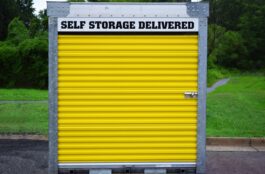Your house could be prone to flooding and other water hazards. These water-related problems could be because of the location of your house, the weather patterns, or damaged pipelines. The flooding inside our home could bring extensive damage to the structural integrity of our property or destroy appliances.
Knowing how to manage these water hazards is essential. We have to understand how water inflicts damage to our homes and what we can do to mitigate the damages water brings. Homeowners should be ready when these issues come up to ensure that we minimize the losses we may encounter.
What should I do after this disaster?
Disasters are almost impossible to prevent and stop. The only thing we could do is to handle the effects of these disasters on our homes. Flooding is a calamity that often occurs to a lot of households, and dealing with the aftermath must be methodical and careful.
We have to keep in mind that the process of cleaning these flooded locations is complex. We have to ensure that we are aware of the hazards that we could encounter and do the clean-up with a checklist in mind. Here are some items on the list you could familiarize yourself with when doing a clean-up and property damage restoration.
Water Removal
When water accumulates and stagnates within the spaces in our homes, it deteriorates the framework. We have to remove the stagnant water from these spaces. We can use buckets or a pump to ensure that a significant amount of water is removed from the space. You can click here to learn more about water removal.
Shut Off Electricity
Electricity and water do not go well when combined. So, that’s why when cleaning wet or flooded areas within your home, it is important that we shut off the power switch. Failing to do this before anything else could lead to electrocution. This hazard could send you to the hospital and could be fatal.
Drying and Dehumidification
When removing water from an area, it is not enough just to use buckets or a pump. We have to use mops or rags to dry these surfaces. When these surfaces still have moisture, molds can develop. Dehumidification must be done in these areas, but this process may require experts to complete.
Avoid Using Electrical Appliances
Drying and dehumidification is a tedious and time-consuming task, so some people think that turning on the heater would be a great step. Having the heater running could bring more harm than good. Moisture and heat are what molds need to flourish. Using a vacuum to dry an area is also a mistake; water can be sucked into the motor causing it to short-circuit or electrocute you.
Conclusion
Flooding inside our homes is an annoyance, but these circumstances are something a lot of people may experience. Water brings damage to our houses and appliances. Getting the water removed is a complex and arduous process. This process needs to be done systematically and correctly as the consequences are severe. These issues are better done by professional water damage specialists. We can rely on these people to take that burden off our shoulders. These services and the results they provide are worth every dollar spent.


